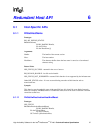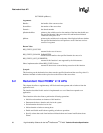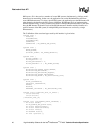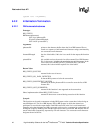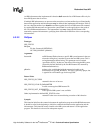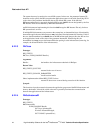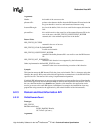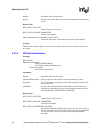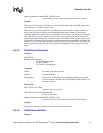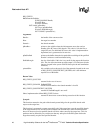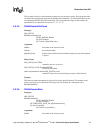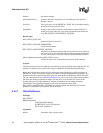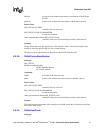
44 High Availability Software for the Intel
®
NetStructure
TM
ZT 4901 Technical Product Specification
Redundant Host API
The current host may be attached to several RH systems. In that case, the parameter Instance ID
should be used to specify the RH system that the application wants to work with. Specifying NULL
as the value of the parameter InstanceID chooses the default RH system. If the function
RhEnumerateInstances is supported, the default RH system shall be the one designated by the first
RH Instance ID in the list returned by RhEnumerateInstances.
An RH infrastructure implementing this function shall recognize RH Instance IDs only for those
RH systems that it services.
If multiple RH infrastructures are present on the current host, an intermediate layer of functionality
between the application and infrastructures may be defined, that implements this function. If this is
the case, that intermediate layer should choose the RH infrastructure that provides the API services
to the application, based on the value of the parameter InstanceID. When doing this, the
intermediate layer may process the InstanceID before passing it to the infrastructure (removing, for
example, the textual identifier of the infrastructure).
6.2.2.3 RhClose
Prototype:
HSI_STATUS
RhClose ( IN RH_HANDLE Handle );
Arguments:
Handle – the handle to the infrastructure obtained via RhOpen.
Return Value:
HSI_STATUS_SUCCESS
returned in the case of success
HSI_STATUS_INVALID_PARAMETER
invalid session handle
Other, implementation-defined HSI_STATUS values
returned if other errors occurred during execution of this function
Synopsis:
This function closes the connection between the application program and the RH infrastructure and
destroys the handle. It should be called at the end to gracefully terminate the communication
between the application and the infrastructure.
6.2.2.4 RhGetInstanceID
Prototype:
HSI_STATUS
RhGeInstanceID(
IN RH_HANDLE Handle,
OUT char *pInstanceID,
IN uint32 InstanceIDLength,
OUT ULONG *pActualSize );




